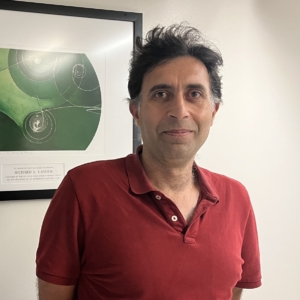Brinson Postdoctoral Fellowships are awarded to postdoctoral astronomers, astrophysicists, and cosmologists who are leading important areas of inquiry and defining new frontiers with their research.
Rapid advances in technology are propelling the fields of astronomy, astrophysics, and cosmology forward at unprecedented rates, leading to a deeper understanding of some of the greatest cosmic mysteries.
The Brinson Foundation began awarding Brinson Postdoctoral Fellowship grants to top U.S. research institutions in 2020, to support postdoctoral scholars working at the forefront of these fields.
The first Fellowship positions began in fall 2021. Topics have included star and galaxy formation, dark matter detection, and multi-messenger solar astronomy. While the broader research areas are specified by the Foundation, the Foundation does not participate in the selection of these Fellows. Some Fellows have joint appointments between institutions.
The Foundation does not accept external inquiries regarding these awards.
Current Brinson Postdoctoral Fellows
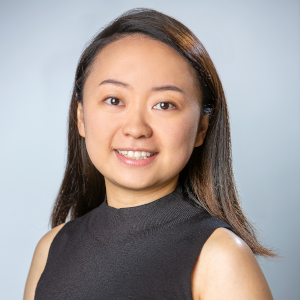 Cuncheng (Mandy) Chen
Cuncheng (Mandy) Chen
Ph.D., Astronomy and Astrophysics, University of Chicago
Host Institutions: Carnegie Institute for Science – California Institute of Technology
Year Awarded: 2024
Project Title: A Multi-scale, Multi-epoch Investigation of CGM Turbulence
Mandy Chen’s research focuses on robustly characterizing the dynamics of the circumgalactic medium—the outermost, gaseous envelope of galaxies. This expansive gas reservoir dominates the baryonic mass of a galaxy, and records critical information about a galaxy’s past and ongoing interactions with the surrounding environment. As a Ph.D. student at the University of Chicago, Chen leveraged the recent advent of high-throughput integral field spectrographs and built the first spatially-resolved constraints on galactic outflows and CGM turbulence in distant galaxies. Using several different strong emission lines as tracers, she initiated and led investigations of gaseous halos surrounding galaxies with and without strong black hole accretion. As a Carnegie-Caltech Brinson Postdoctoral Fellow in Observational Cosmology, Chen harnesses data from ground-based integral field spectrographs on both Keck and Magellan combined with the burgeoning wealth of archival data from JWST/NIRSpec IFU to decode the complexities of turbulent motions in the circumgalactic medium across a wide range of physical scales and cosmic epochs.
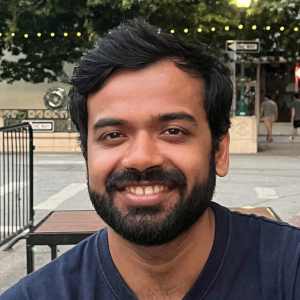 Sunil Simha
Sunil Simha
Ph.D., Astronomy and Astrophysics, University of California, Santa Cruz
Host Institutions: Northwestern University – University of Chicago
Year Awarded: 2024
Project Title: Probing Cosmic Baryons with Fast Radio Bursts (FRBs)
Sunil Simha’s research uses Fast Radio Bursts (FRBs) as probes of matter in the universe. FRBs are flashes of radio light that frequently occur all over the sky daily. Using sensitive radio telescopes, astronomers can detect and pinpoint their locations to distant galaxies from which they originate. Due to their unique millisecond-duration flash, they offer an exciting new window to matter in the universe. Most of the matter, a.k.a. baryons, in the universe is present in a highly diffuse and ionized state, a plasma, which makes them difficult to detect. However, FRBs are dispersed when propagating through this plasma, much like sunlight is dispersed by raindrops to make a rainbow. Measuring this dispersion accurately tells us exactly how much matter the FRB has traveled through, thus directly detecting them. As a NU-UChicago Brinson Postdoctoral Fellow in Astrophysics, Simha’s research combines the information obtained through FRBs with 3D optical maps of the foreground universe to place novel constraints on plasma distribution around and between galaxies. This technique complements other probes of matter in the universe to give us a much more complete picture of the cycle of baryons between galaxies and their environments.
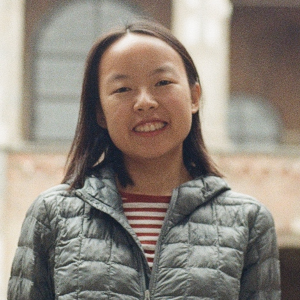 Junwen (Robin) Xiong
Junwen (Robin) Xiong
Ph.D., Physics, University of California, Berkeley
Host Institution: California Institute of Technology
Year Awarded: 2024
Project Title: Phonon-Mediated Quantum Sensors for Low-Mass Dark Matter Detection
As a Brinson Postdoctoral Fellow in Experimental Quantum Cosmology, Junwen Xiong works on the development of next-generation dark matter detectors using superconducting quantum sensors to collect and measure the crystal acoustic vibrations (“phonons”) created by a particle interaction. These detectors will enable the search for much lighter dark matter, potentially helping to identify the dark matter and solving this major mystery of the universe.
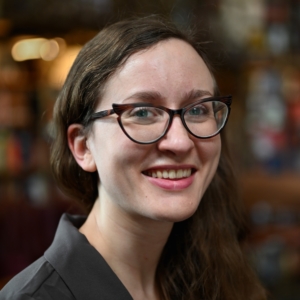 Stella Ocker
Stella Ocker
Ph.D., Astronomy, Cornell University
Host Institutions: Carnegie Institution for Science-California Institute of Technology
Year Awarded: 2023
Project Title: Use of Optical and Radio Surveys to Map Cosmic Plasmas
Stella Ocker studies the diffuse gas between stars and galaxies, the interstellar and intergalactic media that fuel galaxy and star formation. She works to map the distribution of cosmic gas extending all the way from the solar neighborhood to distant galaxies. As a Ph.D. student at Cornell University, Ocker was a Guest Investigator on the Voyager Interstellar Mission, where she discovered a new plasma wave signature that has enabled high-resolution density mapping of the very local interstellar medium. She has also used distant radio sources, including neutron stars and fast radio bursts, to probe cosmic gas in a wide range of astrophysical environments. As a Carnegie-Caltech Brinson Postdoctoral Fellow in Observational Cosmology, Ocker synthesizes state-of-the-art optical and radio surveys, including the Sloan Digital Sky Survey V and the Deep Synoptic Array, to build a distance ladder for using fast radio bursts as probes of the universe’s large-scale structure. Ocker also continues to be a member of the North American Nanohertz Observatory for Gravitational Waves, which uses pulsar timing to search for gravitational waves from supermassive black holes.
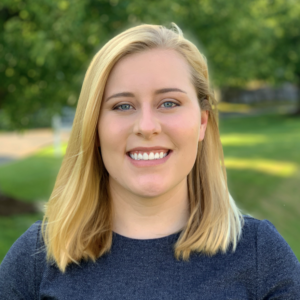 Brianna Zawadzki
Brianna Zawadzki
Ph.D., Astronomy and Astrophysics, Pennsylvania State University
Host Institution: Wesleyan University
Year Awarded: 2023
Project Title: Searching for Signs of Planets using Debris Disk Observations from ALMA
Brianna Zawadzki uses radio interferometers to study the planet-forming environments around stars other than the Sun. She completed her Ph.D. in Astronomy & Astrophysics at Pennsylvania State University in 2023, where she used simulations, observations, and machine learning techniques to better characterize disks of gas and dust in the early stages of planet formation. As a Brinson Postdoctoral Fellow at Wesleyan University, Zawadzki analyzes new observations of debris disks from the Atacama Large Millimeter/submillimeter Array (ALMA) to search for signs of planets and probe the diverse morphologies of these disks. She also continues to develop novel, machine learning based imaging techniques to aid in the acquisition of ultra high resolution interferometric images. This work will help astronomers understand how planets form in greater detail than ever, complementing the thousands of recent exoplanet detections from missions like Kepler and TESS. In addition to her research, Zawadzki enjoys communicating science to the general public through a wide range of outreach events; she spent several years serving as a local organizer of Astronomy on Tap, an organization which brings public astronomy talks to restaurants and breweries, and frequently contributes to a variety of other science events sponsored by universities and public libraries.
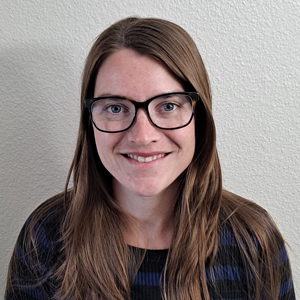 Maren Cosens
Maren Cosens
Ph.D., Physics, University of California, San Diego
Host Institution: Carnegie Institution for Science, Carnegie Observatories Instrumentation Program
Year Awarded: 2022
Project Title: MIRMOS, Components Development and Construction
Maren Cosens’ work in the Physics Department at the University of California, San Diego has been two-fold, with aspects of both observational astrophysics and the development of new instrumentation. Her observational research has been focused on using some of the largest ground-based telescopes in the world to study the properties of star-forming regions and the interplay between those regions and the galaxies in which they form. Namely, the factors that influence the way in which these regions develop, and the impact of the energy imparted to the galaxy through processes known as “feedback.” In addition to her observational research, she has also worked extensively on the development of new instruments, primarily working on the mechanical design for a next generation imager and an integral field spectrograph, Liger, for the W.M. Keck Observatory which will provide improvements in resolution and field-of-view, over existing instruments. During the term of her Brinson Postdoctoral Fellowship in Astronomical Instrumentation at the Carnegie Observatories, she continues to focus on both these areas of research, working on the development of the Magellan Infrared Multi-Object Spectrograph (MIRMOS), as well as utilizing the vast observational resources at Carnegie to expand her studies of star-forming regions to a broader range of environments.
Matthew Hosek
Ph.D., Astronomy, Institute for Astronomy, University of Hawai’i at Manoa
Host Institution: University of California, Los Angeles (UCLA),
Galactic Center Group (GCG)
Year Awarded: 2022
Project Title: New Investigations of Black Hole Physics
Matt Hosek is currently an astronomy postdoc with the Galactic Center Group at UCLA. He completed his Ph.D. in 2018 at the Institute for Astronomy at the University of Hawai’i at Manoa under the direction of Professor Jessica Lu. His research focuses on the formation and dynamics of stars near the center of our Galaxy. As a Brinson Postdoctoral Fellow, Hosek uses data from the Hubble and James Webb Space Telescopes to develop a new reference frame to measure the orbits of stars near the Galactic Center with improved precision and accuracy. This will enable tests of General Relativity and probe the distribution of matter near the central supermassive black hole. He is also measuring the masses of stars in two young star clusters in the region in order to evaluate how the extreme environment near the Galactic Center impacts the physics of star formation.
Prior Brinson Postdoctoral Fellows
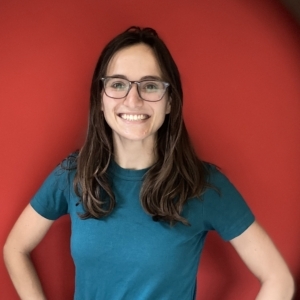 Juliana Cherston
Juliana Cherston
Ph.D., Aerospace Sensor Systems, MIT Media Lab
Host Institution: Harvard Smithsonian Center for Astrophysics
Year Awarded: 2023
Project Title: Bridging Frontier Technology with Interstellar Matter Research
Juliana Cherston received a B.A. in Physics from Harvard University, followed by a doctoral degree at the MIT Media Lab. Her Ph.D. on interstellar dust metrology turns spacecraft thermal blankets into large field-of-view cosmic dust detectors. By measuring the momentum, and eventually the composition, of incident dust, these sensors might enable searches for exotic dust populations of scientific intrigue. Relevant targets include remnant grains from a near-Earth Supernova explosion, or grains that shed light on the propagation of life through the galaxy. Featuring system design using R&D-stage fiber sensors and ground calibration at dust accelerator facilities, Cherston’s Ph.D. work culminated in the launch of an active sensor payload to the exterior walls of the International Space Station, and first prize in the Tech Briefs design competition for aerospace systems. During the term of her Brinson Postdoctoral Fellowship at the Harvard CfA, Cherston is delving into quantum sensors and their potential to further enrich space-based measurements of astrophysical interest, with potential for collaboration across multiple institutes. This new chapter will feed her expertise in bridging advanced, and sometimes unconventional, technology into fundamental science.
Amin Aminaei
Ph.D., Communication Systems, Lancaster University, UK
Host Institution: University of California, Davis, Department of Physics and Astronomy
Year Awarded: 2022
Project Title: Dark E-Field Radio Experiment
Amin Aminaei has a background in radio-frequency engineering and astronomy. Radio-frequency engineering is a subset of electronic engineering involving the application of transmission line, waveguide, antenna and electromagnetic field principles to the design and application of devices that produce or utilize signals within the radio band. As a Brinson Fellow, Aminaei applies this unique expertise to the Dark E-field Radio experiment, specially designed by Tony Tyson to detect the electromagnetic signals of the dark photons, one of the primary candidates for dark matter. The search for electromagnetic signals in the experiment covers the MHz and GHz (microwave) frequency spectrum. In this position, Aminaei primarily works on the lab setup for the microwave band. An initial paper on the details of the experiment was published in 2021. Prior to this Fellowship position, Aminaei worked at the Netherlands Institute for Space Research (SRON) where he was a team member of the SPICA/SAFARI (a mission concept for the Space Infrared Telescope for Cosmology and Astrophysics). From 2016-2018, while at the University of Oxford, UK, he contributed to the development of digital systems for the Square Kilometer Array (SKA), the world’s largest radio telescope to be built in Australia and South Africa. Aminaei held a postdoctoral and technical engineer position at Radboud University in the Netherlands from 2009-2015 where he helped develop and install the Auger Engineering Radio Array (AERA) that sits in the field of Pierre Auger Observatory in Argentina. AERA detects the radio emission of extensive air shower caused by ultra-high energy cosmic rays (UHECR). At Radboud he was also a team member responsible for developing the Lunar Radio eXplorer (LRX, Phase-A study), an instrument planned for the ESA lunar mission for radio astronomy on the Moon’s surface. In 2020, Aminaei was awarded third prize for the NASA Ideation Challenge for designing a miniature ultra-wideband Ground Penetrating Radar for the lunar Artemis Program.
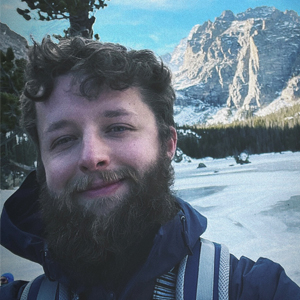 Ryan French
Ryan French
Ph.D., Solar Physics, UCL Mullard Space Science Laboratory
Host Institution: Association of Universities for Research in Astronomy (AURA), National Solar Observatory (NSO)
Year Awarded: 2022
Project Title: Multi-Messenger Solar Astronomy
Ryan French’s research uses telescopes on the ground and in space to investigate explosive events on the Sun called solar flares. French completed his Ph.D. in Solar Physics at the UCL Mullard Space Science Laboratory. While completing his degree, he was awarded the prestigious Newkirk Fellowship, funding his multiple productive science visits to the NCAR High Altitude Observatory in Boulder, Colorado. As a Brinson Postdoctoral Fellow at the National Solar Observatory, French is diving deeper into this field using the next-generation facilities of the Daniel K. Inouye Solar Telescope (DKIST) and the European Space Agency’s Solar Orbiter, both of which began science operations in early 2022. In addition to his scientific work, French is a veteran science communicator, with a decade of experience presenting science and astronomy to a diverse range of audiences, most recently as an Astronomy Presenter at the Royal Observatory Greenwich. He has also educated wider audiences through interviews on BBC World News and BBC Radio 2.
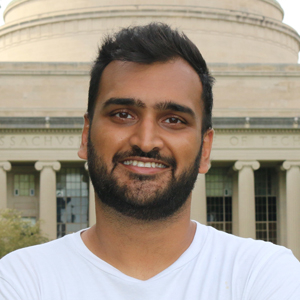 Anirudh (Ani) Chiti
Anirudh (Ani) Chiti
Ph.D., Physics, Massachusetts Institute of Technology
Host Institution: University of Chicago, Kavli Institute for Cosmological Physics (KICP)
Year Awarded: 2021
Project Title: Star and Galaxy Formation in the Early Universe
Ani Chiti studies how the earliest stars and galaxies evolved in the first billion years of the universe. He performs this research by identifying, mapping and investigating the chemical composition of nearby ancient stars and galaxies, in an approach known as Galactic Archaeology. In his Ph.D. work at the Massachusetts Institute of Technology, Chiti developed imaging analyses that led to an order-of-magnitude increase in the efficiency of identifying the most ancient stars. This enabled several pioneering studies, including providing the first direct evidence that the first galaxies formed in massive, extended distributions of an enigmatic substance known as dark matter. As a Brinson Postdoctoral Fellow at KICP, Chiti scaled these analysis techniques for the next generation of digital sky surveys to build an unprecedented view of the ancient Milky Way, in addition to immediate projects that will unveil the interplay between dark matter, the first supernovae and the earliest galaxy mergers in shaping the first galaxies. Chiti was awarded a Brinson Prize Fellowship that will begin in fall 2024.
Yuya Kusuki
Ph.D., Physics, Yukawa Institute for Theoretical Physics, Kyoto University
Host Institution: California Institute of Technology (Caltech), Institute for Quantum Information and Matter (IQIM)
Year Awarded: 2021
Project Title: Interface of Quantum Gravity and Quantum Information Science
Yuya Kusuki studies the relationship between quantum gravity (QG) and what’s called, ‘boundary conformal field theory’ (BCFT). In general, it is difficult to include quantum effects in gravity. However, recently it has been proposed that quantum effects can be translated into the mathematically equivalent theory, BCFT, which in turn would allow for simpler calculations to be used to address the issues within QG. While the validity of BCFT has been verified in a few examples, there are still many black boxes. As a Brinson Fellow, Kusuki developed for the field a better understanding of the relationship between QG and BCFT by using modern physics tools, conformal bootstrap and by a modern interpretation of QG in terms of quantum information theory. In the process, he developed a novel QG-BCFT dictionary. This work promises to provide a new approach to addressing long-standing problems in QG. Kusuki received his Ph.D. from the Yukawa Institute for Theoretical Physics, Kyoto University. He is the recipient of the Particle Physics Medal: Young Scientist Award in Theoretical Particle Physics (2020) and the Young Scientist Award of the Physical Society of Japan (2020). Kusuki is currently an associate professor at Kyushu University in Japan.


